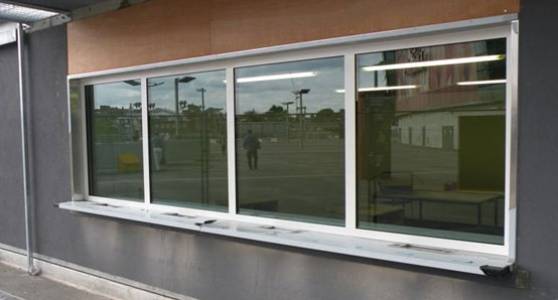Description
Laminated Glass: Enhanced Safety and Performance
Laminated glass is a superior glazing solution offering enhanced safety, security, and sound insulation compared to traditional annealed glass. It's constructed by bonding two or more layers of glass with a tough, transparent interlayer, typically Polyvinyl Butyral (PVB) or SentryGlas®. This interlayer is the key to its unique properties.
Key Features & Benefits:
- Enhanced Safety: In the event of breakage, the interlayer holds the shattered glass fragments together, preventing them from scattering and minimizing the risk of injury. This is crucial for applications where safety is paramount, such as windows in vehicles, buildings, and security installations.
- Improved Security: Laminated glass offers significantly increased resistance to forced entry compared to standard glass. The interlayer makes it more difficult to break and increases the time it takes to penetrate, deterring intruders and providing valuable time for response. The thicker the interlayer and the number of glass layers, the greater the security.
- Superior Sound Insulation: The interlayer effectively dampens sound waves, significantly reducing noise transmission. This makes laminated glass ideal for noise-sensitive environments like homes near busy roads, offices in noisy areas, or sound studios. The effectiveness of sound reduction depends on the thickness of the glass and interlayer.
- UV Protection: The interlayer blocks a significant portion of harmful ultraviolet (UV) rays from the sun, helping to protect furniture, artwork, and flooring from fading and degradation. This extends the lifespan of interior furnishings and maintains the aesthetic appeal of the space.
- Increased Strength & Durability: Laminated glass is inherently stronger than annealed glass, offering better resistance to impact and thermal stress. This makes it a durable and long-lasting glazing solution for various applications.
- Aesthetic Versatility: Laminated glass can be customized with various colors, tints, and patterns incorporated into the interlayer, providing a wide range of aesthetic options for architectural and decorative purposes.
Applications:
Laminated glass is widely used in a variety of applications, including:
- Automotive Windshields: Standard in virtually all vehicles for enhanced safety.
- Building Facades: Providing both aesthetic appeal and enhanced security.
- Skylights & Rooflights: Offering protection from impact and UV damage.
- Balconies & Railings: Ensuring safety and preventing falls.
- Museum Display Cases: Protecting valuable artifacts and exhibits.
- Security Windows & Doors: Deterring intruders and enhancing security.
- Soundproofing Applications: Reducing noise pollution in various environments.
Specifications:
Laminated glass is available in a wide range of thicknesses and configurations, depending on the specific application and performance requirements. Common thicknesses include 6mm, 8mm, 10mm, and 12mm, often laminated with 0.76mm or 1.52mm PVB interlayers. Custom specifications are also available.
Choosing the Right Laminated Glass:
The optimal choice of laminated glass depends on factors such as:
- Security requirements: The level of security needed dictates the glass thickness and interlayer type.
- Acoustic needs: The desired level of sound reduction impacts the glass and interlayer choices.
- UV protection requirements: The need for UV protection affects the interlayer selection.
- Aesthetic preferences: Color and pattern options allow for customization.
Contact us today to discuss your specific needs and get a tailored recommendation for your laminated glass requirements.
